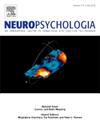婴儿啼哭反应中基于反馈的调整偏差的神经和行为特征
IF 2
3区 心理学
Q3 BEHAVIORAL SCIENCES
引用次数: 0
摘要
婴儿啼哭是促使看护的关键信号,然而,在这种情况下,个体如何适应反馈的神经行为机制尚未得到充分探索。在本研究中,34名年轻成人(18名女性,年龄从19岁到26岁)没有看护经验,我们使用婴儿哭声反馈范式来表征行为调整的个体差异及其神经相关性。参与者判断婴儿哭泣的原因,同时记录他们的反应时间变化(ΔRT)和脑电图。我们的研究结果揭示了婴儿哭声特有的情境特定调整偏差,不同于对动物叫声的反应。在婴儿哭闹的背景下,负面反馈偏差(负面反馈后速度变慢)与较高的自我报告照料敏感性相关,而正面反馈偏差(积极反馈后速度变慢)与较低的照料动机相关。受试者间表征相似性分析(IS-RSA)进一步揭示了神经反应的关键不对称性,表明在负反馈(480-1000 ms)和正反馈(600-700 ms)期间,较高的负反馈偏差与较高的受试者间神经相似性相关,而较高的正反馈偏差与更特殊的神经模式相关。此外,一项中介分析表明,这些行为调整完全介导了后期正电位(LPP)对照顾敏感性的影响,其中LPP振幅较低预示着负反馈后更慢,这反过来又预示着更高的婴儿预期照顾敏感性。这些发现将特定的行为调整与不对称的神经相似性结构联系起来,为照顾倾向提供了潜在的标记,并强调了反馈处理在照顾者-婴儿互动中的重要性。本文章由计算机程序翻译,如有差异,请以英文原文为准。
Neural and behavioral signatures of feedback-based adjustment bias in response to infant cries
Infant crying is a critical signal that prompts caregiving, yet the neurobehavioral mechanisms underlying how individuals adapt to feedback in this context are underexplored. Here, in 34 young adults (18 female; age from 19 to 26 years) with no prior caregiving experience, we used an infant cry feedback paradigm to characterize individual differences in behavioral adjustment and their neural correlates. Participants judged the cause of infant cries while their reaction time changes (ΔRT) and EEG were recorded. Our results revealed context-specific adjustment biases unique to infant cries, distinct from responses to animal vocalizations. Within the infant crying context, a negative-feedback bias (slowing after negative feedback) correlated with higher self-reported caregiving sensitivity, whereas a positive-feedback bias (slowing after positive feedback) correlated with lower caregiving motivation. Inter-subject representational similarity analysis (IS-RSA) further revealed a key asymmetry in neural responses, showing that higher negative-feedback bias was associated with greater inter-subject neural similarity during negative feedback (480–1000 ms) and positive feedback (600–700 ms), whereas higher positive-feedback bias was associated with more idiosyncratic neural patterns. Furthermore, a mediation analysis showed that the influence of the Late Positive Potential (LPP) on caregiving sensitivity was fully mediated by these behavioral adjustments, where lower LPP amplitudes predicted greater slowing after negative feedback, which in turn predicted higher intended infant caregiving sensitivity. These findings link specific behavioral adjustments to an asymmetric neural similarity structure, offering potential markers for caregiving dispositions and highlighting the importance of feedback processing in caregiver-infant interactions.
求助全文
通过发布文献求助,成功后即可免费获取论文全文。
去求助
来源期刊

Neuropsychologia
医学-行为科学
CiteScore
5.10
自引率
3.80%
发文量
228
审稿时长
4 months
期刊介绍:
Neuropsychologia is an international interdisciplinary journal devoted to experimental and theoretical contributions that advance understanding of human cognition and behavior from a neuroscience perspective. The journal will consider for publication studies that link brain function with cognitive processes, including attention and awareness, action and motor control, executive functions and cognitive control, memory, language, and emotion and social cognition.
 求助内容:
求助内容: 应助结果提醒方式:
应助结果提醒方式:


